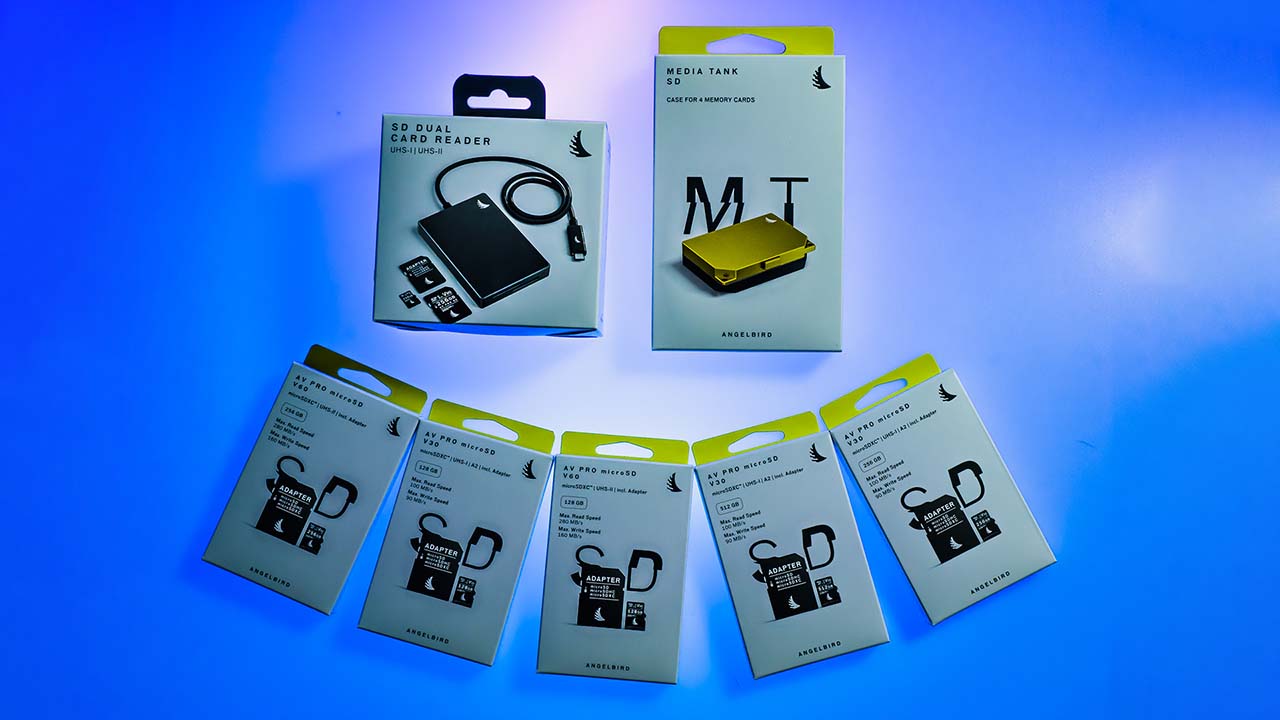
Simon Wyndham takes a look at Angelbird's range of high speed microSD cards, along with a dual USB reader and carry options.
Storage isn't sexy, but without it your camera gear won't be able to record all the glorious footage that you take with it. There is a good amount of competition on the market for SD cards, although not all cards are the same, which is why some of them are officially approved by manufacturers and some aren't. In short, you want to make sure that your footage can be recorded reliably, and with modern cameras recording high bitrate imagery the demands placed on the humble SD card are greater than ever.
Angelbird is a company that has been making professional video storage for a not insignificant number of years now, and it has gained a reputation for reliability and speed. One of the USPs for Angelbird's SD cards is that the company ensures that they are capable of not only high maximum speeds, but that they can sustain a minimum speed reliably, which is very much what you want when recording high bitrate video.
Angelbird sent us a range of its microSD cards to take a look at, along with the new Media Tank storage box and a carry bag to carry everything in. First, let's take a look at the company's brand new V30 card.
AV PRO microSD V30 card
The newest cards on Angelbird's microSD roster is the V30 range. These cards range from 128GB through to 512GB in capacity. They've been designed to handle reliable compressed video recording at up to 6K in resolution, and they contain Angelbird's Stable Stream technology to ensure uninterrupted recording performance of 80MB/s throughout the entire capacity.
The cards are specified as having a maximum write speed of 90MB/s and a read speed of 100MB/s. So, how did the cards perform in the real world? First of all, the figures that I obtained will vary depending on the card reader and the interface used. My tests were performed using the Blackmagic Design Speed Test using the USB-C port connected to the Angelbird SD card reader. I also tested the cards using the SD card slot built into my computer. The results between the two were as near as dammit the same.
In general the cards averaged around 80MB/s write speed, which is spot on Angelbird's claim for uninterrupted writing. Meanwhile, the average read speed I achieved was around 90MB/s. Speeds across the different capacities gave me, on average, very similar results to one another.
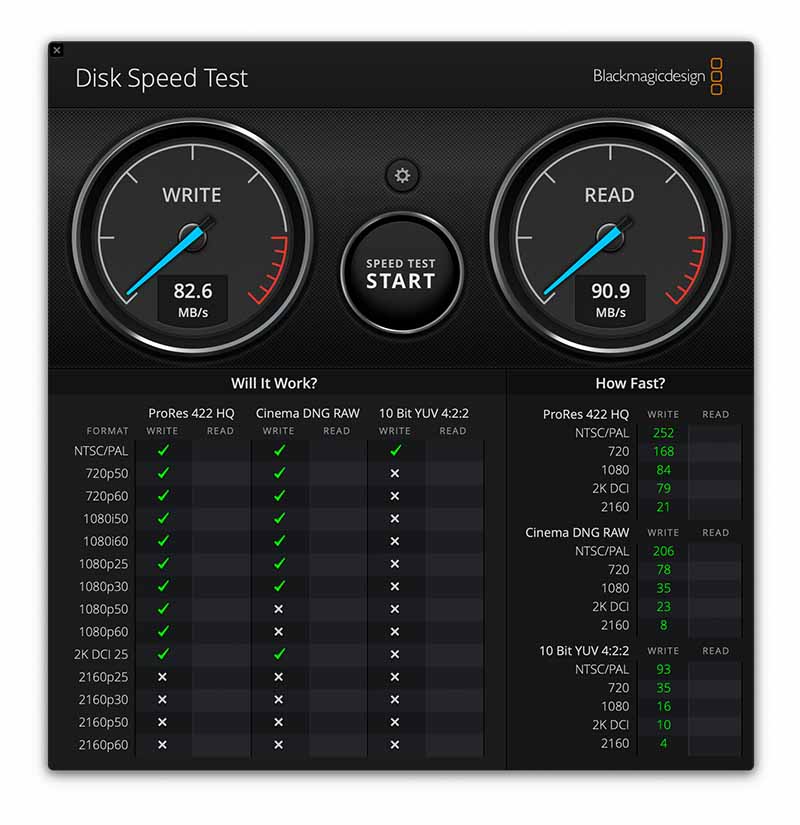
The Angelbird 512GB V30 microSD card tested through the Angelbird USB-C card reader plugged into an M1 Max MacBook Pro
The Angelbird V30 SD cards are priced at €29.99 (128GB), €47.99 (256GB), and €83.99 (512GB).
AV PRO microSD V60 card
Next up are the V60 cards. These are the fastest microSD cards that Angelbird produces and they're available in capacities of 128GB and 256GB. They're pricier than the V30s, but if higher resolutions and less compressed codecs are to be recorded, then these are the ones for you.
Angelbird claims that its V60 cards are capable of sustained 140 MB/s write and 260 MB/s read speeds. Once again, I tested the cards using the Angelbird USB-C card reader with the Blackmagic Design Disk Speed test.
On average I achieved the 140MB/s write speed very consistently, sometimes going above this figure. Read speed-wise I got around 244MB/s on average. But once again I do need to point out that you may get better or worse results depending on your computer and interface, and it's also important to point out that the really important part is how the cards perform inside an actual camera. All cards come with a three-year limited warranty, and Angelbird provides an in-house data recovery service should there be any issues.
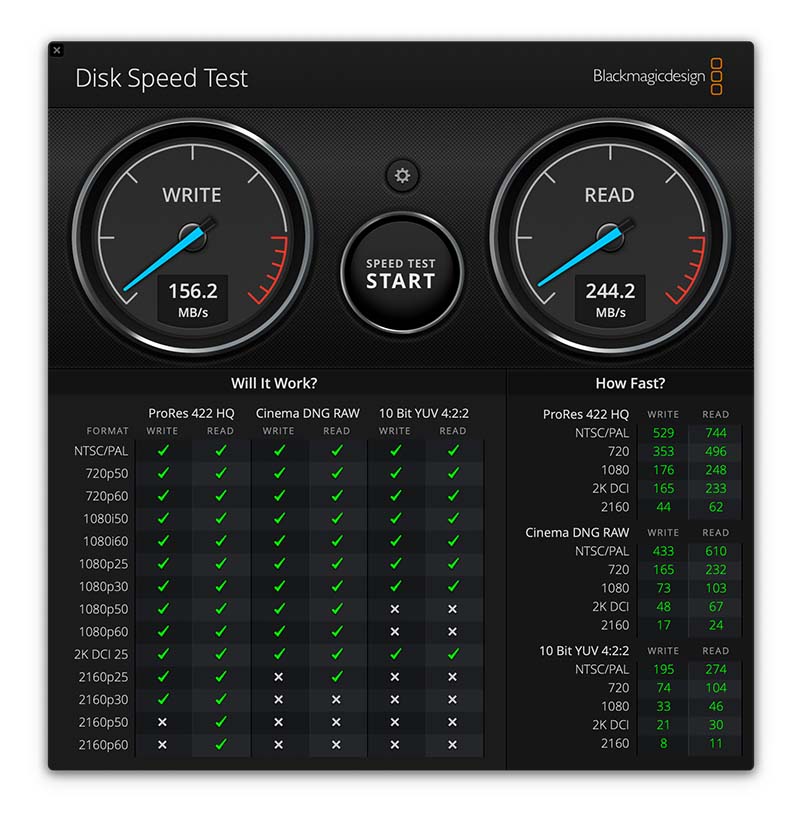 Results from the Angelbird 256GB V36 microSD card tested through the Angelbird USB-C card reader plugged into an M1 Max MacBook Pro
Results from the Angelbird 256GB V36 microSD card tested through the Angelbird USB-C card reader plugged into an M1 Max MacBook Pro
Media Tank
The Media Tank is a tough storage case to keep up to four full size SD cards, or four microSD cards in adaptors. Other versions are available for CFast and CFExpress Type B cards. The case is designed to be dustproof, splash proof, ESD, heat, X-ray, and shock proof. It's made from aluminium, anodised in a bright metallic yellow colour so that it is easy to find. To complete it, a large locking button (that is handily easy to operate with gloves on) keeps the case securely closed.
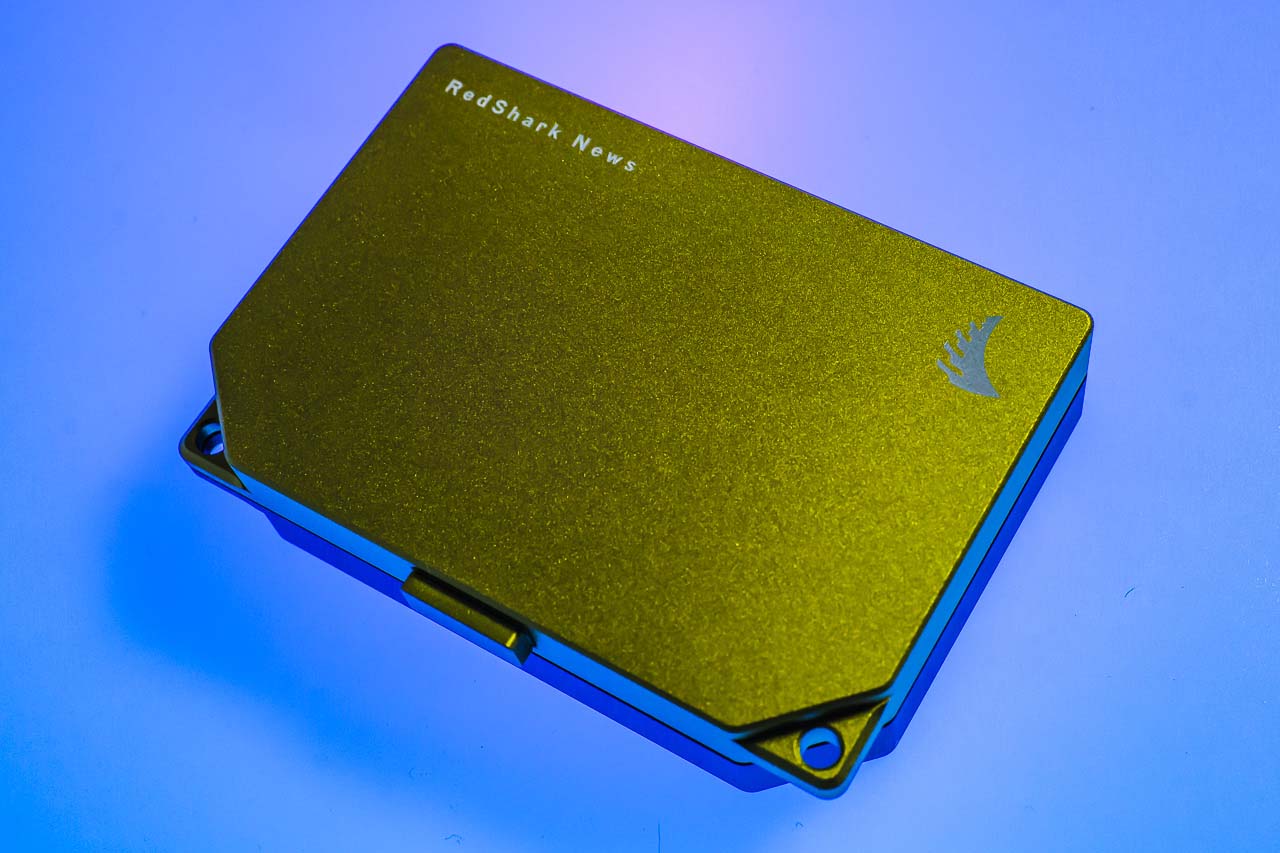
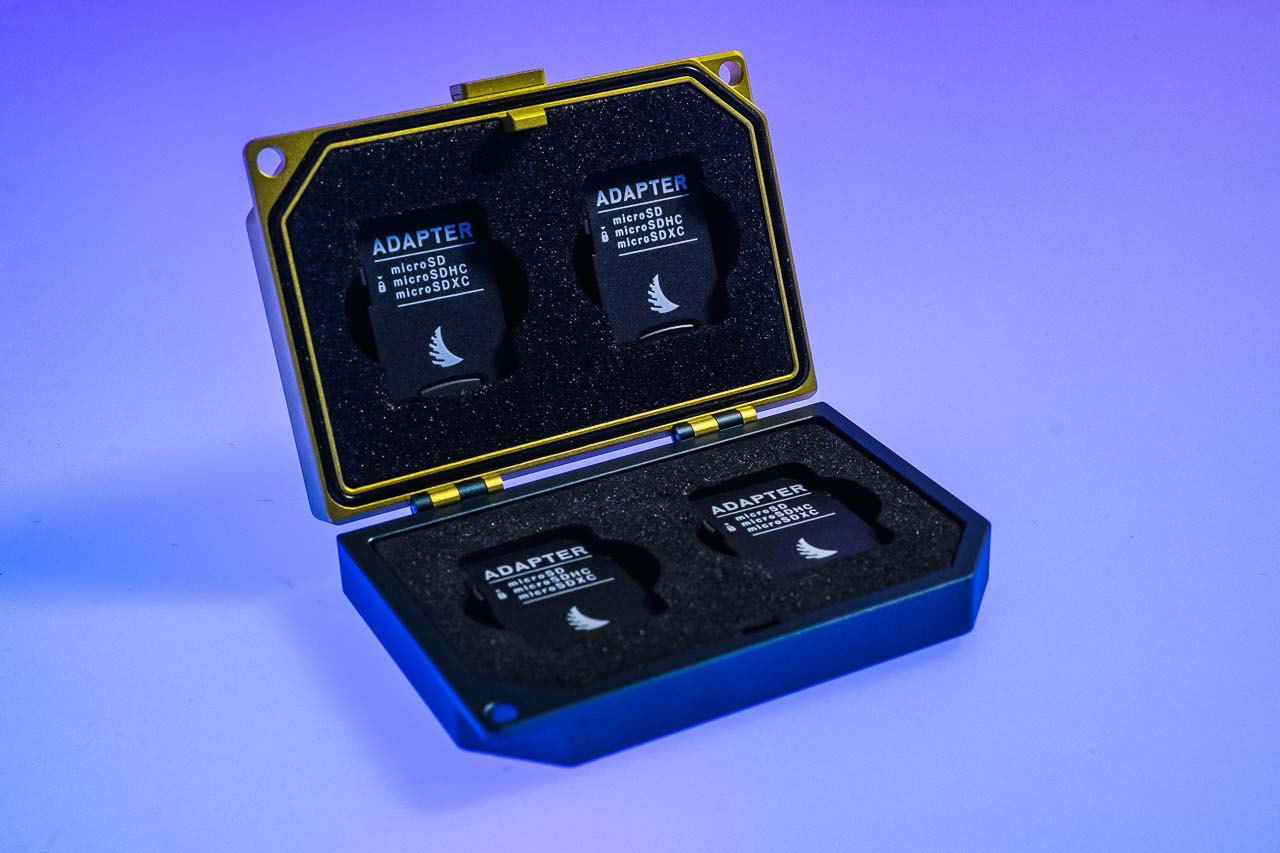
The case is small enough to fit into a pocket, and it also features secure holes that you could fit a mini padlock to for security or attach a carabiner. It can also be customised with an engraving for your company.
I'm all for neat ways to store cards, but it has to be said that the Media Tank isn't cheap. At €95.99 it is an expensive way to store four SD cards, and it would be remiss of me not to say that there are other cases out there with water resistance or even full water sealing for a lot less, although without the all-metal construction of the Angelbird case. That said, it is very nicely made and looks great.
SD Dual Card Reader
Next up is the Angelbird SD Dual Card Reader. Even though computers often have SD card readers built in, and even some external drive enclosures, they also often only have one slot. The Angelbird SD card reader features two card slots for fast, simultaneous transfer.
The enclosure is made from machined aluminium in a tasteful gunmetal grey shade. It comes with two large rubber 'feet' that can be attached to the base to prevent scratching any surface it's placed on. Two lights, one for each slot, let you know when the card is being accessed. Meanwhile, on the rear of the reader are two write protect switches for added security against accidental file deletion. The USB connection is of a USB-C 3.2 Gen 2 type, and it is recessed so that the cable cannot accidentally be disconnected, while making it very neat.
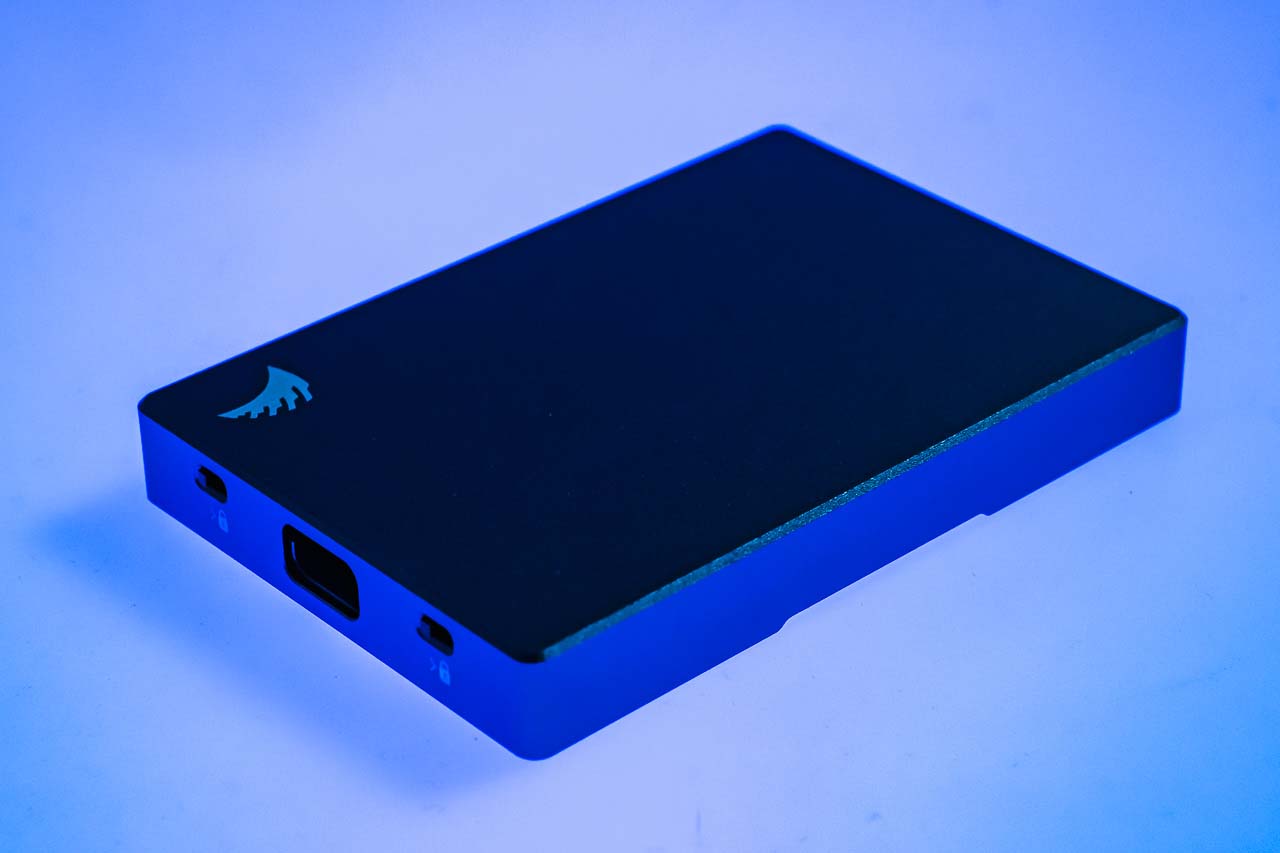
The Angelbird SD Dual Card Reader showing the rear with USB-C slot and two write protect switches
The USB-C connector is compatible with Thunderbolt cables, although the device itself isn't Thunderbolt capable. The package comes with a USB-C to USB-A adaptor for those with older machines.
The Angelbird SD Dual Card Reader is priced at €107.99, which, like the Media Tank isn't exactly inexpensive. However, in my use of it, it has proven to provide fast file transfer, and the ability to transfer two cards simultaneously is useful. It's also nice not to have to scramble around in a bag for a tiny fingernail-sized card reader. That said it's still a lot of money for what is, at the end of the day, an SD card reader - even if it is incredibly well made and looks good. There are two other readers available for CFExpress Type B and CFast 2.0 cards, which are priced the same as the SD version.
Tags: Production Review Storage


Comments